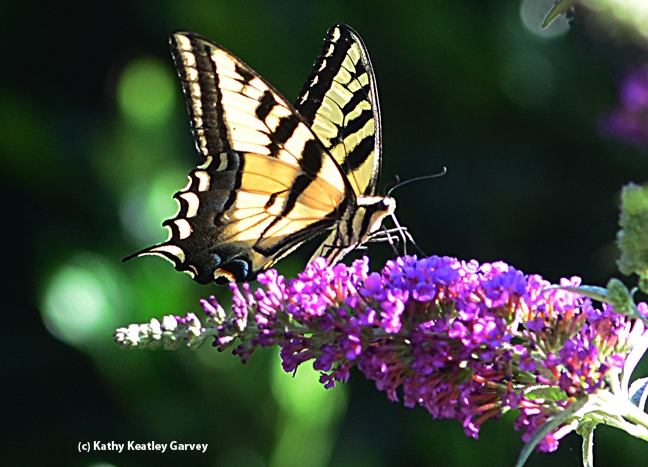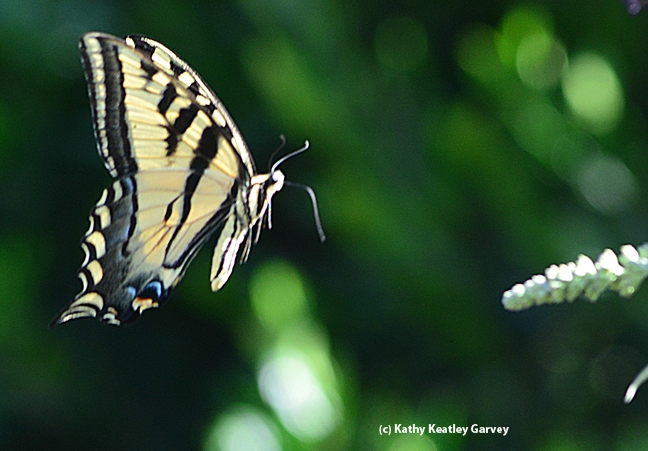If you plant it, they will come.
Western tiger swallowtails (Papilio rutulus) can't get enough of our butterfly bush. For the first time ever, we saw two of them and managed to get both in the same image. Courtship? Curiosity? Chance encounter?
Whatever it was, they came together, touched and flew away.
Butterfly expert Art Shapiro, distinguished professor of evolution and ecology at the University of California, Davis, says that "the Western tiger swallowtail is basically a species of riparian forest, where it glides majestically back and forth along the watercourse. It has expanded into older urban neighborhoods where several of its host genera are grown as shade trees, and behaves as if the street were a watercourse. In the high country and on the Sierran east slope its usual host is Aspen.
"One brood (June-July) at higher elevations; one and a partial second at Washington; 2-3 at lower elevations with a long flight season (late February or March-September or October). An avid puddler. Visits Yerba Santa, California Buckeye, Milkweed, Dogbane, Lilies, Coyotemint, etc., etc. and in gardens frequent at Lilac and Buddleia. Spring individuals are smaller and usually paler than summer. Low-elevation hosts include Sycamore (Platanus), Ash (Fraxinus), Cherry and other stone fruits (Prunus), Willow (Salix), Privet (Ligustrum), Lilac (Syringa) and (in Sacramento County) Sweet Gum (Liquidambar)."
Nevertheless, "the tiger" is common in Western America and its bright yellow and black markings with its blue and orange spots on its tail is a sight we never tire of--even when parts of the swallowtail are missing. Predators, such as birds, praying mantids and spiders, try to grab it.
They may have a "tiger" by the tail, but that doesn't mean they can hold on.
Attached Images:

A Western tiger swallowtail nectarine on a butterfly bush. (Photo by Kathy Keatley Garvey)

Mirror image! A Western tiger swallowtail spots a member of its species. (Photo by Kathy Keatley Garvey)

Well, hello there! A Western tiger swallowtail checks out another one. (Photo by Kathy Keatley Garvey)

It's up, up and away. (Photo by Kathy Keatley Garvey)